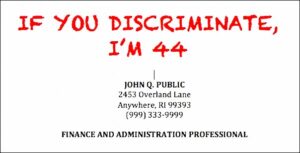
How to Handle Layoffs Mindfully
Although layoffs have been hovering at historically low levels in the U.S., that doesn’t mean they are rare. For instance, in March 2024, over 1.5

Although layoffs have been hovering at historically low levels in the U.S., that doesn’t mean they are rare. For instance, in March 2024, over 1.5
There are a number of hot issues, new developments, and emerging challenges will no doubt catch employers by storm in 2016. Supreme Court decisions, federal
The TalentCulture #TChat Show is back live on Wednesday, July 30, 2014, from 7-8 pm ET (4-5 pm PT). The #TChat radio portion runs the

Age discrimination has no place at work — and yet it persists. Why? What should we do? The TalentCulture community speaks…

Do you want to lead others? Start by leaving behind age stereotypes that keep us all from getting ahead. Try these 5 steps

This week, #TChat offers 3 ways to play! We marry old school with new tech, and hopefully advance workplace culture and practices for everyone